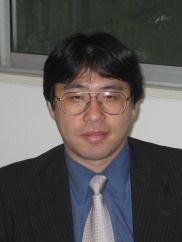
Yasuhiro Sugawara
Osaka University, Japan
Title: Kelvin probe force microscopy with atomic resolution
Biography
Biography: Yasuhiro Sugawara
Abstract
Among the surface characterization techniques at the atomic scale, atomic force microscopy (AFM) has become a powerful tool for investigating the surface properties and has been extended to manipulate atoms, enabling the creation of novel nanostructures, particularly on insulator surfaces. On the basis of AFM, Kelvin probe force microscopy (KPFM) and electrostatic force microscopy (EFM) have been widely used to measure surface potential distributions, charge transfer and electronic/electrical properties, etc. KPFM has been applied to various surfaces with atomic resolution, including conductive, semiconductor and insulating surfaces, such as in imaging the charge distribution within a molecule. The underlying principle of KPFM is as follows: the contact potential difference (CPD) between the tip and the sample surface is detected from the shift in resonance frequency or the amplitude of the cantilever by applying AC bias voltage, which modulates the electrostatic interaction force between the tip and the sample. A DC bias voltage is used to nullify oscillating electrical forces from the CPD. In atomic-resolution KPFM, the CPD is specifically referred to as the local contact potential difference (LCPD). The surface potential distribution measured using KPFM is influenced by the CPD between a tip and surface, the effect of stray capacitance of a cantilever, fixed monopole charges, and dipole moment on surfaces and interfaces. The interpretation of atomic scale KPFM contrast studies has been controversial. Here, we describe the investigation about the contrast mechanism in KPFM with atomic resolution. First, we investigate the effect of stray capacitance on surface potential measurement using KPFM. Next, we describe the investigation of the surface potential distribution on a TiO2 (110) 1×1 surface by KPFM and atom-dependent bias-distance spectroscopic mapping. Then, we describe a new multi-image method for obtaining the frequency shift, tunneling current and LCPD on a TiO2 (110) 1×1 surface with atomic resolution.

